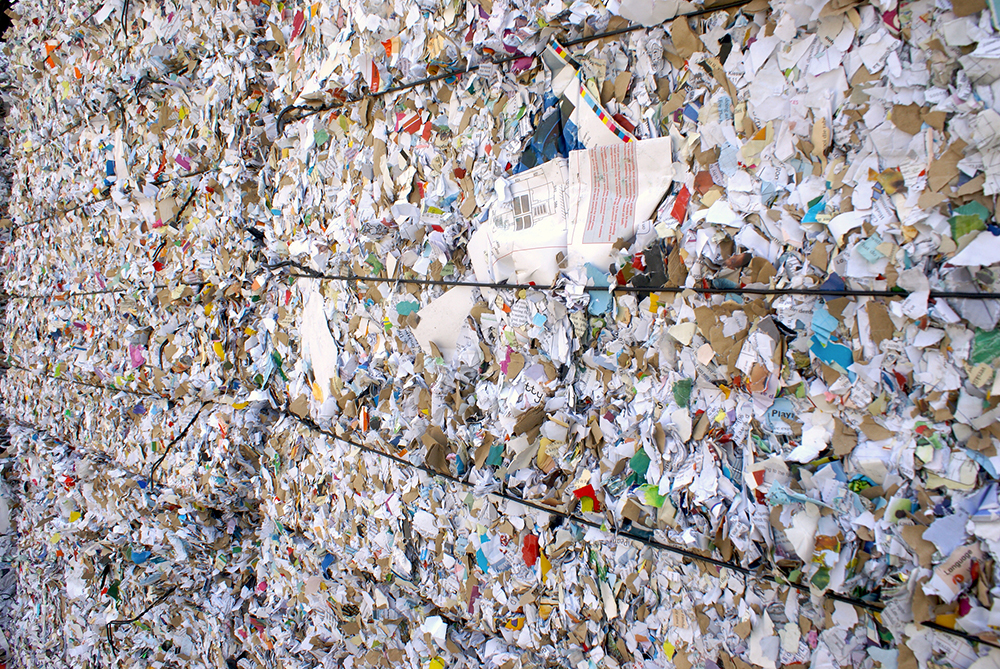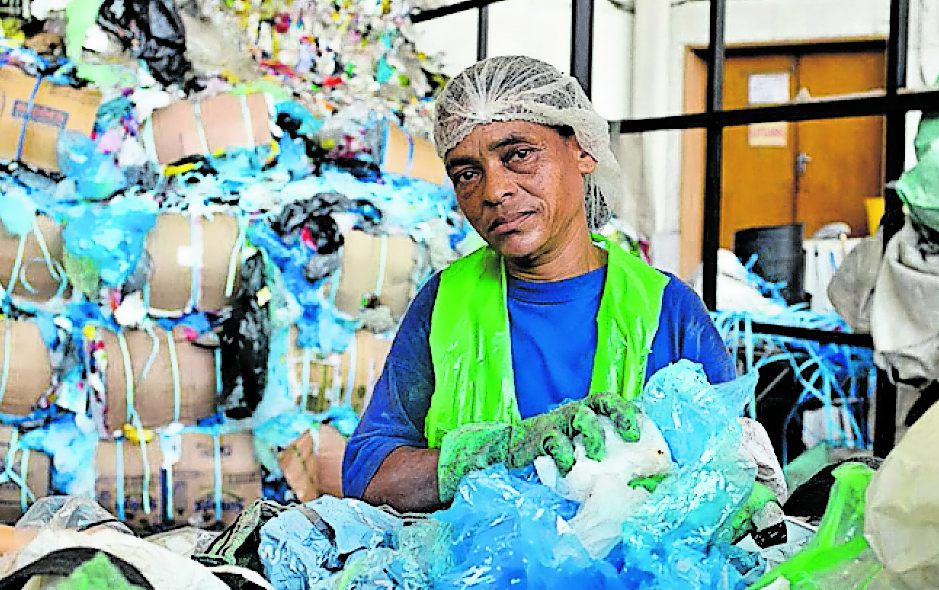A domestic rainwater harvesting system stores rainfall, but is expensive to install and won’t supply a household for long. (Source: Water Doctor)
The government announced a major plan in November 2019 to address South Africa’s wastewater crisis and periodic drought conditions. It recognises that much of South Africa suffers from poor water management.
The situation is so bad that last year the South African National Defence Force was dispatched to assist with sanitation repairs at various towns, such as Vanderbijlpark near the Vaal River. As part of an annual blue and green drop project, AfriForum last year tested the water (blue drop) in 206 towns and the sewage (green drop) of 124 wastewater treatment plants.
It found that a total of 65 of the 124 sewage purification plants tested during 2019 did not comply with the set standards, pointing to a problem with managing wastewater treatment plants. “A major cause of concern is that so many plants are releasing sewage into our rivers,” said AfriForum.
The other side of the waste management coin is water shortages, which has resulted in increased recycling and re-using of available water by domestic consumers of water. In more affluent areas, people are turning to drinking bottled water, and installing rainwater harvesting (collecting rainwater from roofs) and greywater systems (recycling water from sinks, showers, baths and washing machines) at their homes and workplaces. Some are also installing boreholes.
By harvesting rainwater and reusing greywater in a responsible manner, the demand for potable water may be drastically reduced, although it is estimated that up to 50% of all household potable water is used for garden irrigation purposes.
Reduced water availability at source — dams and reservoirs — owing to regular drought conditions in one or another region of Southern Africa has resulted in many households and companies having to deal with the reality of water insecurity. And further fuelling demand for rainwater harvesting and greywater systems is the sharply increasing municipal water tariff hikes.
As a result of a growing awareness of a need for change in the management and use of water, greywater is increasingly seen as a viable alternative source of water for a range of “fit for purpose” end uses. About 120ℓ of bath water and 80ℓ from a shower flows down the drain needlessly.
However, such domestic systems help individual homes more than the country, says Wits School of Governance visiting Adjunct Professor and former Department of Water Affairs Director-General Mike Muller. He has previously warned that rainwater harvesting will not make a significant contribution to South Africa’s water challenges. The most important rainwater harvesting we do is capturing river flows in our dams. In years of drought, household rainwater harvesting has less potential, “as it doesn’t solve long-term drought or mitigate significant water interruptions,” — most domestic systems store less than 10 000ℓ — usually not enough to supply a household for more than a few weeks, says Muller.
“At a household level, it’s a bit like trying to go off-grid on electricity. It costs a lot and, very often, you still need to be connected to the grid during the long dry season. What happens then is that municipalities start charging a ‘capacity charge’ so you pay even if you don’t use power, just for the privilege of being able to connect to the grid when you need it.
“And when people have tried to work out whether there is really a monetary saving, the conclusion is often that it has not been worth it,” says Muller.
The solution is to install infrastructure that will save rainwater from run-off into the stormwater system, and preserve it for use in the dry periods between rainfalls. The future saving on the cost of municipal water is obvious.
Muller says: “As a big picture person (more concerned about cities, rather than individual households) I am always keen to remind people that big dams are also a form of rainwater harvesting. So, I sometimes question the people who say that we must slow down stormwater runoff and let it sink into the ground. Most of the time, it then evaporates (on the highveld at least), when we want to see it flowing into rivers and dams.
Recycling takes centre stage in September with Clean-Up & Recycle SA Week taking place from September 14-19, culminating in National Recycling Day on September 18 and International Coastal Clean-Up Day/Let’s Do It World Clean-up Day on September 19 2020. While large public gatherings are prohibited and beaches are closed in an effort to prevent the spreading of the Covid-19, Douw Steyn, Plastics|SA’s Director of Sustainability, explains the reasoning behind the event: “The International Coastal Clean-Up Day is the world’s biggest volunteer effort for ocean health. Over the past 24 years that South Africa has been participating in this global event, we have seen tens of thousands of people give up two hours of their time to help rid our beaches of litter.”
 South Africa has a recovery rate of 68.5% for recoverable paper products.
South Africa has a recovery rate of 68.5% for recoverable paper products.
No need to panic about going paperless
These days, many people and organisations worry about paper; about printing on it or using it for packaging. But, as one of the world’s oldest technologies, the way paper is sourced and made has come a long way.
Worries about using too much paper stem from long-held myths that paper is “bad for the environment”. On the contrary, paper is a highly sustainable material, says Francois Marais, manager of Fibre Circle, a producer responsibility organisation, which manages extended producer responsibility (EPR) programmes on behalf of the paper sector.
“Forestry companies, as well as manufacturers of wood and paper-based products, subscribe to certification systems to ensure that wood fibre is sourced in a responsible manner,” he adds.
Paper is a renewable product, as new trees are planted to replace harvested timber. Paper also continues to store the carbon that is absorbed and locked into the wood fibre while the trees were growing. This is why recycling is so important — it keeps the carbon locked up for longer.
South Africa has a recovery rate of 68.5% for recoverable paper products, which excludes tissues, sanitary products and items such as books.
However, the recovery and recycling of paper products does not happen without significant investment in technology, infrastructure and awareness.
Recycling requires value
“When recyclables are difficult to collect, their value for a waste collector is low,” says Marais. “One paper cup isn’t worth the effort for a collector; one tonne of paper cups from one location every week is a different story.”
Secondly, there must be an end-use market for the recycled products, whether it’s paper fibre or other materials that have been separated from the paper, such as polyethylene and aluminium.
Fibre Circle members pay EPR fees, which encourage better product design, resource-efficient recovery and improved recycling technologies, to move waste paper management closer to the goal of getting all recyclable paper off the streets and away from landfills.
Good packaging requires better responsibility
A relatively new concept, EPR holds the manufacturer responsible for the entire lifecycle of its product, especially for its recovery, recycling and final disposal. While it’s currently voluntary, Marais says there are indications it will become mandatory in future.
Paper and packaging industry bodies are in consultation with government concerning the Department of Environment, Forestry and Fisheries’ proposed regulations regarding extended producer responsibility in line with Section 18 of the National Environmental Management: Waste Act 59 of 2008.
Making the circle bigger
While producers, importers, brand owners and retailers — collectively referred to as “obliged industries” in the draft legislation — have a responsibility to ensure that their products are recyclable, consumers can also play a pivotal role.
Paper is an earth-friendly material, but the end of its life is still in our hands. Get your paper products from credible suppliers who source their paper from sustainable forestry, and recycle it. It makes a world of difference.
 Reclaimers are paid on a daily basis for the product they deliver to buy-back centres and re-processors
Reclaimers are paid on a daily basis for the product they deliver to buy-back centres and re-processors
Waste-picker the heroes of recycling
South Africa’s recycling industry is almost as efficient as the most advanced countries in the world — despite being for the most part highly labour intensive, whereas theirs are mostly mechanised.
The reason is the close to 60 000 waste pickers in the country, who play a substantial role in the country’s waste management industry. As part of the country’s informal waste sector, they help recover recyclables — plastics bags and bottles, glass bottles, all types of cans and paper — from household waste streams, as well as waste materials sent to landfill sites.
However, when the country entered national lockdown due to the Covid-19, “it became clear that South Africa was not only facing a global health pandemic, but also the possibility of a humanitarian crisis as these waste reclaimers were no longer allowed to work and earn a living,” says Anton Hanekom, Executive Director of Plastics|SA — the umbrella body representing all sectors of the South African plastics industry. The industry came together to raise close to a million rand to purchase electronic food vouchers, which were sent to collectors via their cellphones and could be redeemed at major supermarket retailers.
Cheri Scholtz of PETCO (the South African PET Recycling Company) highlights the important role reclaimers play in the recovery of PET (polyethylene terephthalate) bottles and other recyclables in South Africa for reprocessing, and in the process, a lifeline for themselves as reclaimers are paid on a daily basis for the product they deliver to buy-back centres and re-processors.
Adri Spangenberg, CEO of the Polystyrene Association of SA and the Southern African Vinyls Association, says: “In some instances, these informal waste reclaimers are the only people who recover recyclables in municipalities that do not have a two-bin collection system for separation at source.”
The paper recycling sector is another major component of waste management in South Africa. This sector is thriving in South Africa thanks to the efforts of waste management providers, collectors and consumers. South Africa’s 2020 paper recycling target of 70% was met in 2017, three years ahead of schedule, after 1.3-million tonnes of paper, cardboard and liquid packaging were recycled.